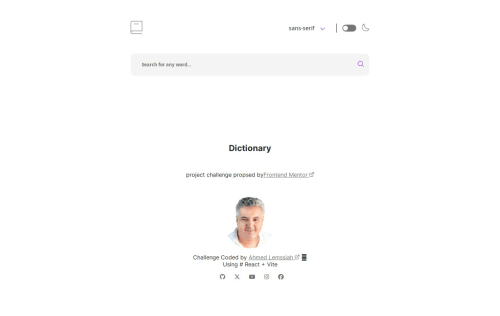Dictionary web app Using Reactjs

Solution retrospective
This is my first project using React.
I think the framework choice was pretty bad. The idea to start a complicated challenge using a framework I'm just starting to learn made it way more challenging, I think. (This is why it took a week for the development and the code refactoring).
I'm happy that I could finish my first React project. I'm immersed in it now, and I've learned so much in this week. Concepts like Hooks, useState, useEffect, and getContext are just mind-blowing, and at the same time, the logic behind them makes sense to me because I was on the edge every time due to component props scope, for example. And I needed a solution to get the data to the App level...
What challenges did you encounter, and how did you overcome them?The difficulty lies in the fact that React itself can be quite tricky when it comes to managing the app's state and component scope. Checking the local storage proved to be particularly challenging. React's paradigm of unidirectional data flow and component encapsulation necessitated careful consideration of how and where to access and update local storage within the component lifecycle. This required a deep understanding of React's state management mechanisms and the proper utilization of lifecycle methods to ensure data persistence across sessions.
What specific areas of your project would you like help with?The doubt I have is about the structure of the code, the best practices perhaps, and the pitfalls in projects like this one.
I added some features like word autocompletion when the user searches for words... I don't know if it's a good thing or perhaps if there are some ideas on how I can do it better.
All along the way, I was thinking about user experience and how I can reach the level of online apps. Things like keyboard navigation or mouse wheel navigation for the suggested words, for example, could be a nice idea to implement.
Please log in to post a comment
Log in with GitHubCommunity feedback
No feedback yet. Be the first to give feedback on Ahmed Lemssiah's solution.
Join our Discord community
Join thousands of Frontend Mentor community members taking the challenges, sharing resources, helping each other, and chatting about all things front-end!
Join our Discord